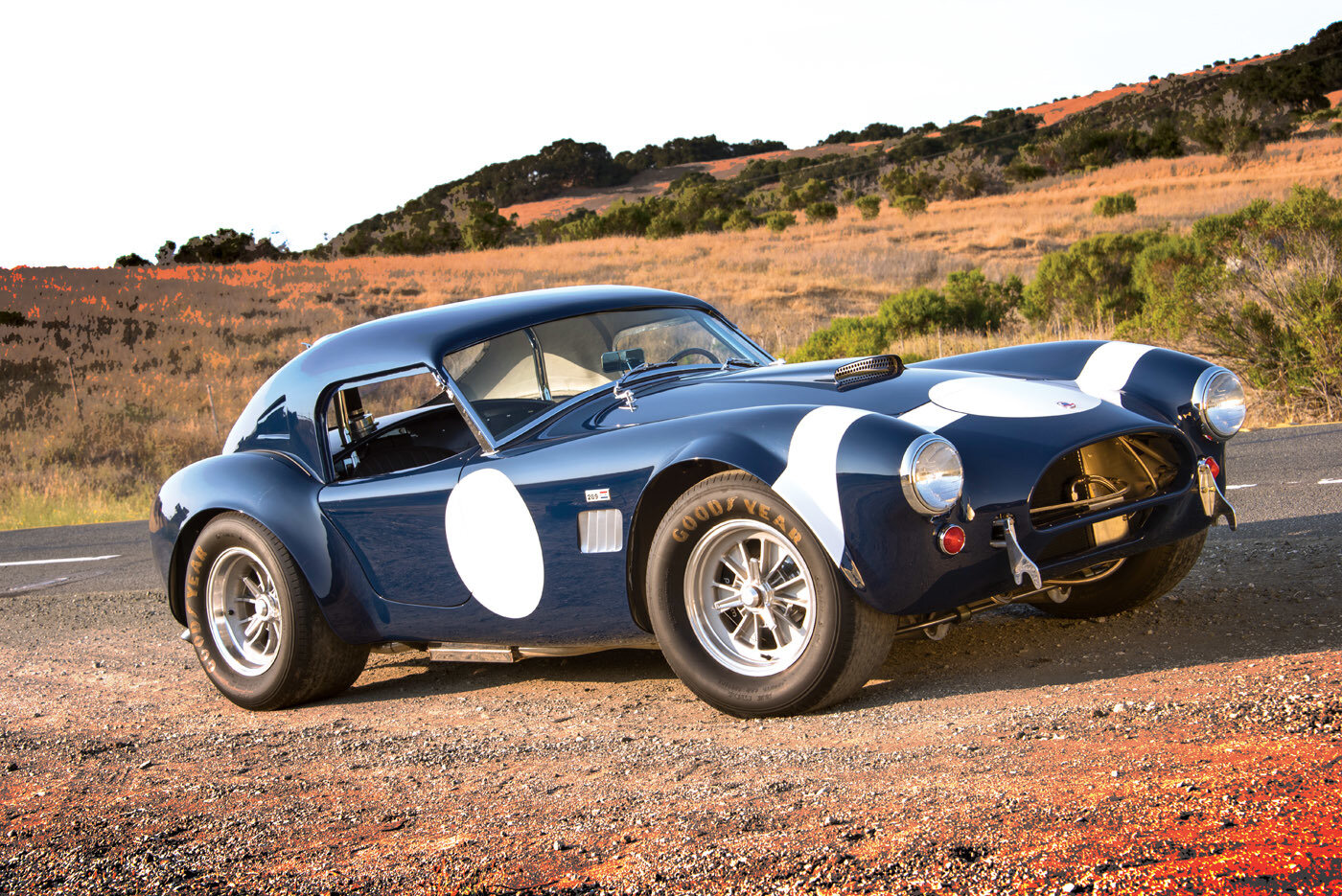
FIA Cobra fitted with a Le Mans hardtop
Story and Photos by Steve Temple
Cobra roadsters are renowned for a lot of things — brutal acceleration, wild handling and anti-social styling to name just a few — but aerodynamics isn’t one of them. Shelby realized that his racers needed streamlining for the long straightaway at Le Mans since they couldn’t exceed 157 mph, nearly 30 mph less than the Ferrari 250 GTOs. More power wasn’t the answer, as that only added weight.
So in 1963 a swept hardtop was added to a couple of Cobras, CSX2131 and CSX2142, but this approach was nothing new. In Australia, fastback designs known as slopers were introduced in 1935 and appeared on several different makes and models. Testing in the 1950s indicated that the sloped roofline significantly reduced the coefficient of drag.
What made these two Cobras special, besides the hardtop, was that they were the first two specifically built as competition cars from the time of initial assembly at AC Cars. That fact not only makes them quite significant, but also some of the rarest of all racing 289s. While they still were unable to beat Ferrari, finishing third in the GT class and never matching the success of the Daytona Coupe, the cars did set the stage for the Coupe’s World Manufacturer’s Championship run in 1965.
So this early attempt at aerodynamic enhancement gives the hardtop historical significance, making it worthy of imitation in our book. That brings us to the intriguing and precise reproduction shown here from Shelby American dealer Dynamic Auto West. But there’s quite a bit more than meets the eye with this car, as it’s a hybrid of sorts.
Instead of the 289’s bendy 3-inch frame rails and antiquated leaf-spring suspension, the chassis numbered CSX7084 was built for David Hudson with the 427 Cobra’s 4-inch tubing, made out of stainless steel and fitted with coilover shocks. The chassis, aluminum body and hardtop were all brought together and fitted by Kirkham Motorsports in Provo, Utah. A special two-part trunk lid was required to clear the trailing edge of the roof for access to the trunk. Other unique attributes of this special construction include air conditioning, Penske fully adjustable shocks, a differential oil cooler and removable four-point roll cage.
Adding the distinctive fastback roof not only improves the roadster’s aerodynamics, but also gives the car an utterly different persona. It almost looks like a completely new model, rather than merely a Cobra with a cap.
The stiffer chassis under the car makes it well qualified for most any mill, and in this case, a hot small block fits the bill. Roush supplied a 347 stroker topped by Borla injection, with a custom high-performance exhaust exiting out the rear. This setup is good for 460 horses, and Ted Taormina of Taormina Imports handled the installation and tuning. By way of qualifications, Ted is well known for setting a land speed record in a Cobra roadster, which we covered in a previous issue.
So what’s it like to drive this alternative Cobra configuration? While the hardtop adds a certain amount of practicality with better weather protection than a leaky soft top (or no top at all, of course), it poses some challenges when climbing into the cockpit — especially so for Ted, who stands well over 6 feet tall.
Also, the noise level in the cockpit can’t be ignored, as the aluminum skin is not well insulated. But it also recreates the feel of the original, with palpable sensations of sound and vibration. There’s no cushioning of the engine revs from the driver, as you viscerally experience the rise and fall of exhaust notes with every shift. No need to check the tachometer when changing gears, as you do it by ear, not sight. So this comment comes as more of an observation than a complaint, as we would never want a Cobra to feel too cushy.
While we wouldn’t risk sampling speeds above the original roadster’s 157 mph limit (noted at the outset), the ride does feel smoother and more stable at triple-digit speeds. With far less buffeting of wind in the cockpit, it’s tempting to push the car hard and fast. All told, there’s a reasonable trade-off. You give up a breezier cockpit for a more restricted and sheltered cabin. And of course, the potential for a much higher top end — just in case you want to go for it on a long straightaway.

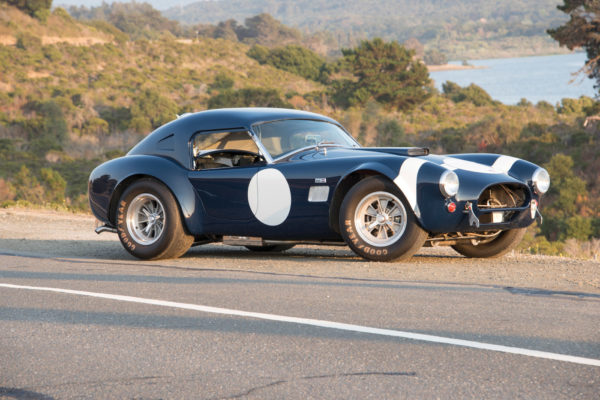
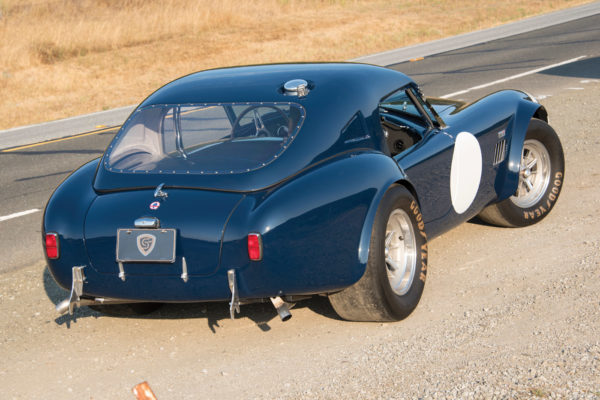
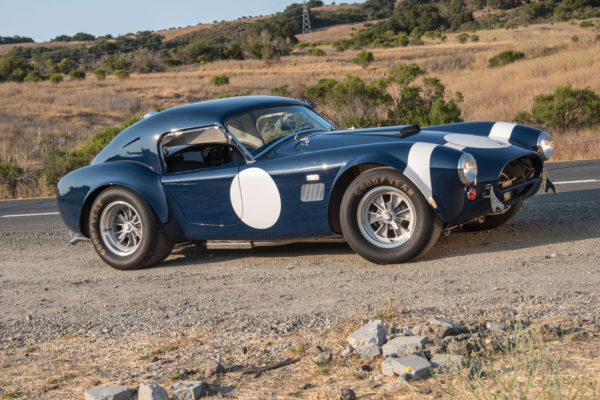
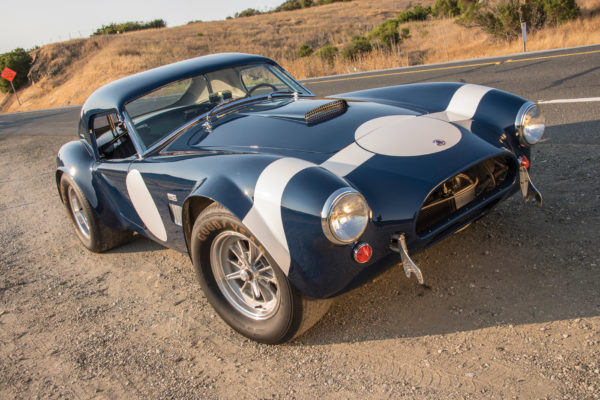
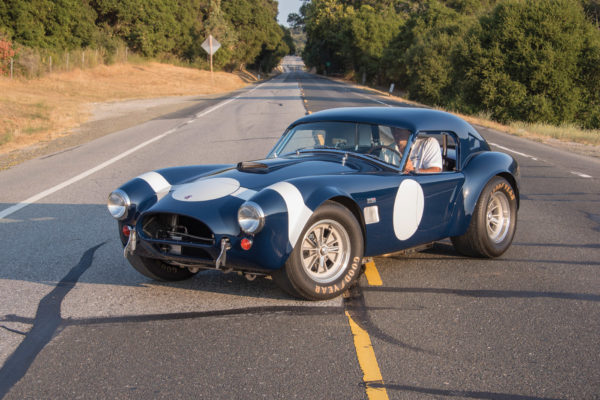
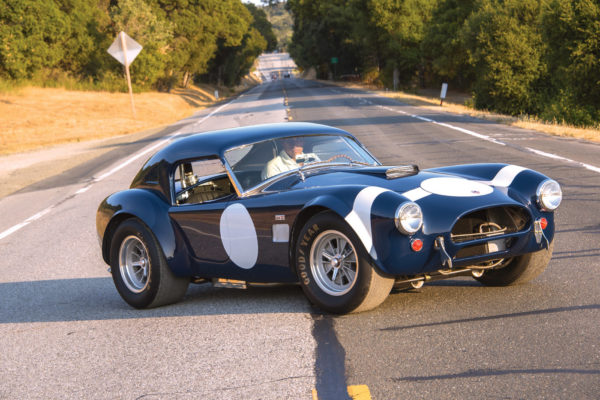
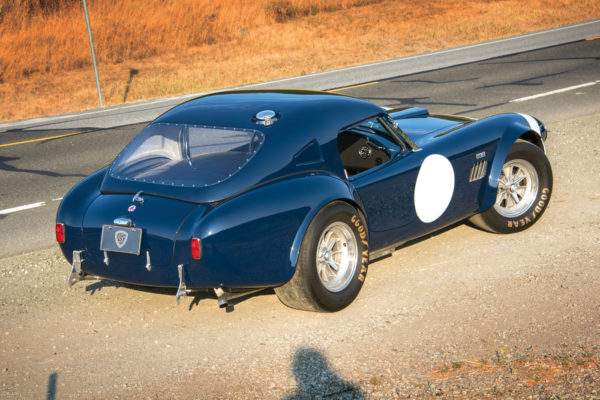
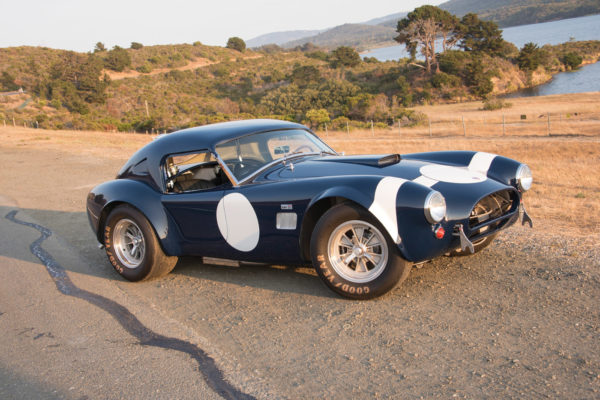
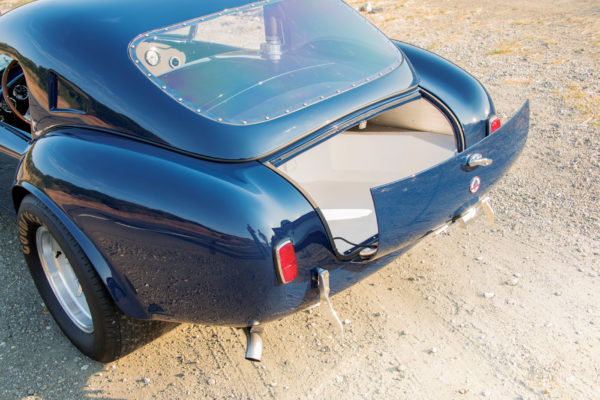
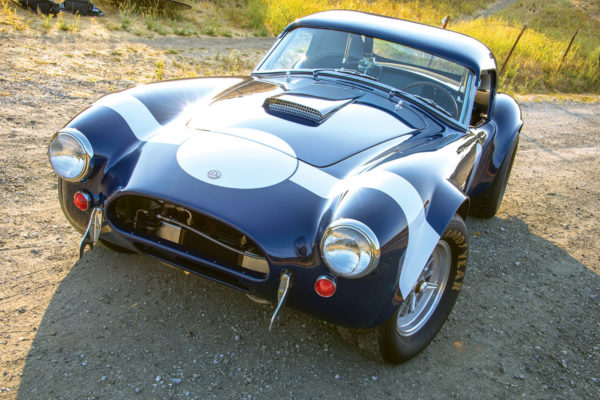
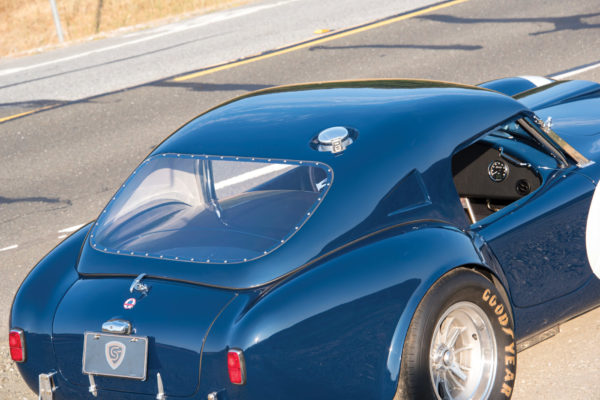
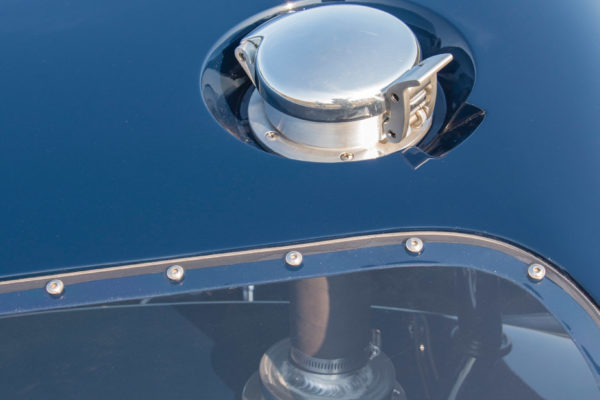
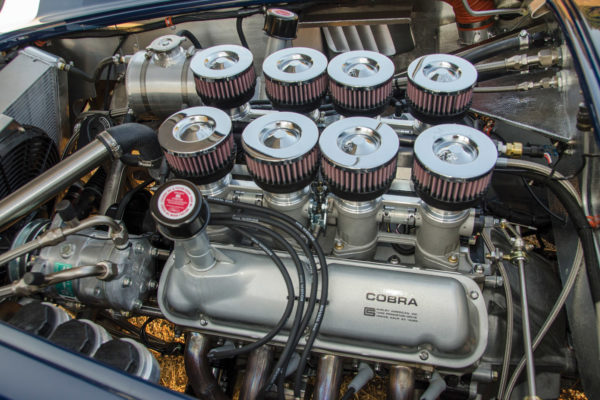
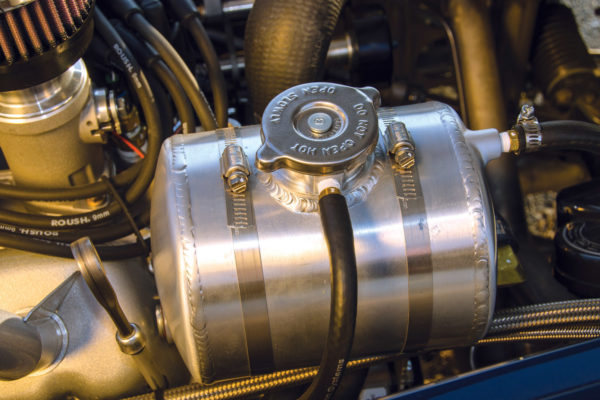
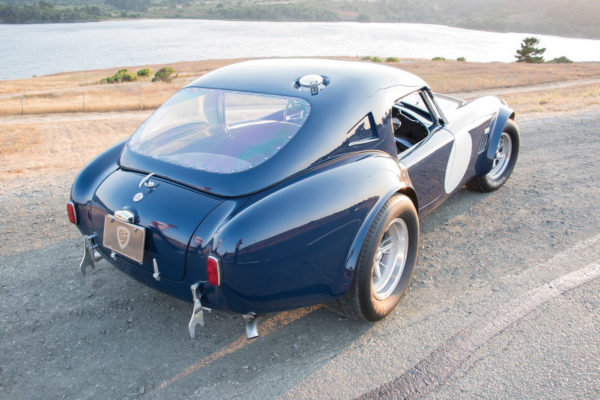
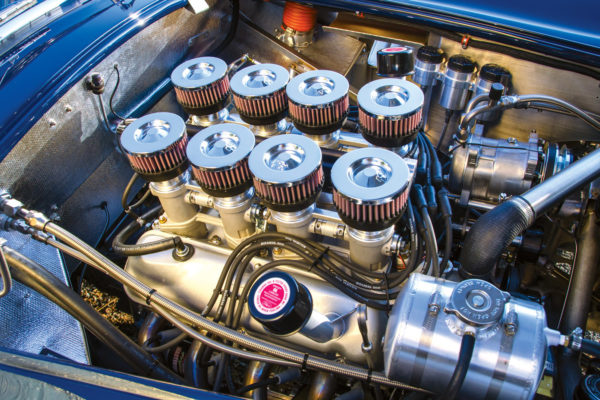
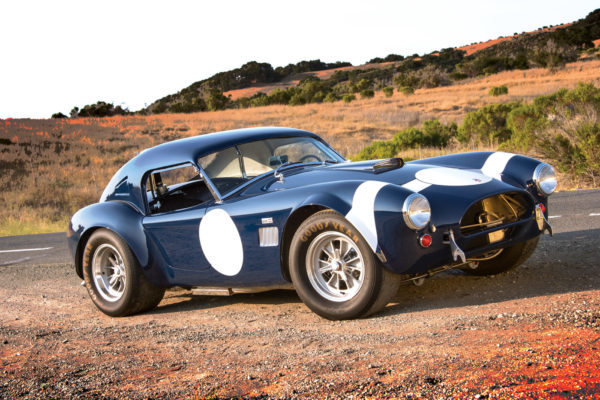
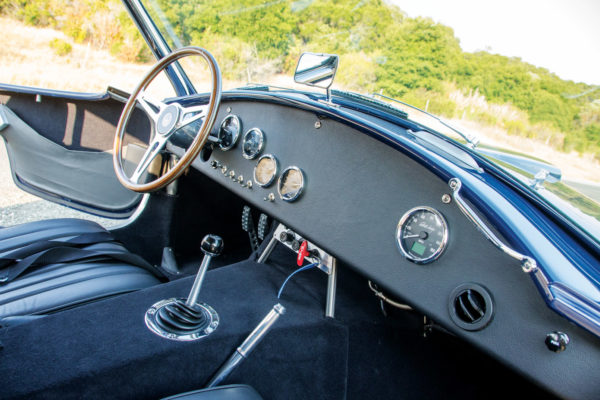
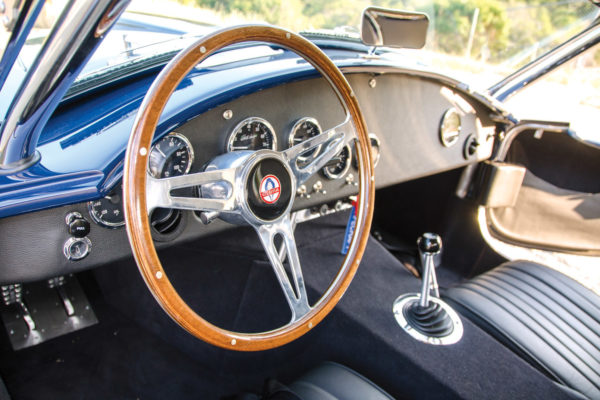
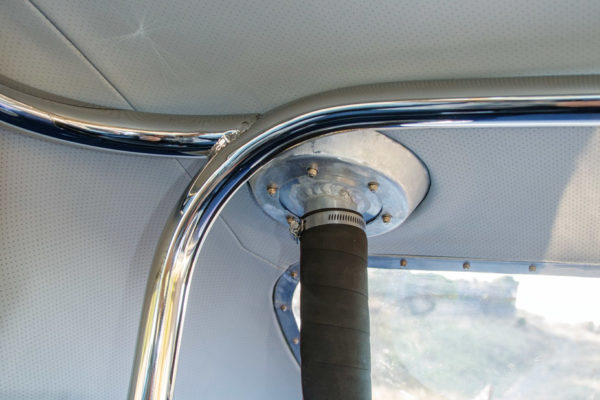
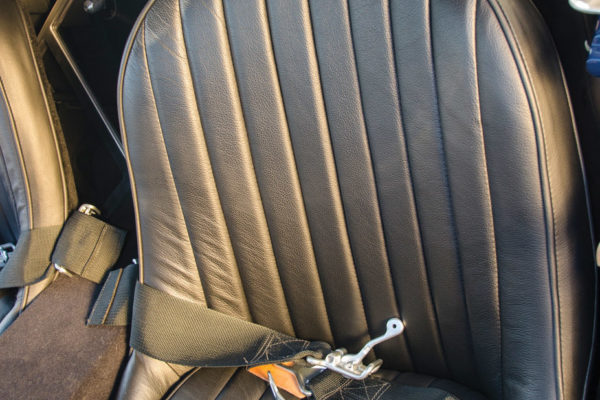
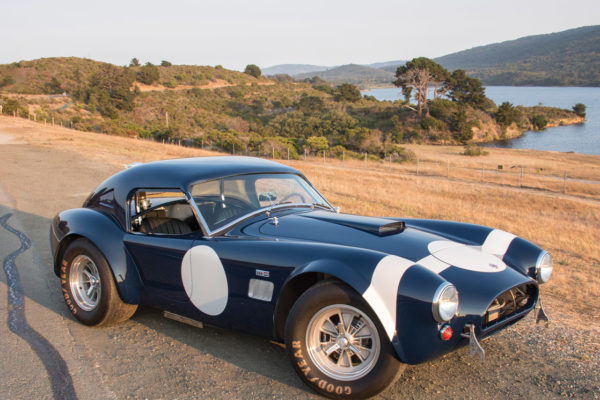
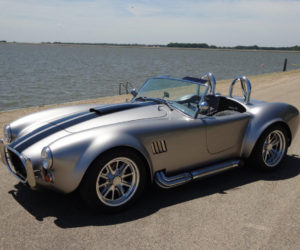
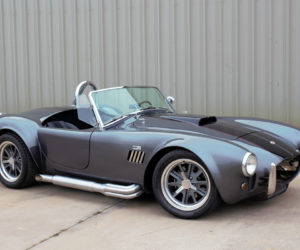
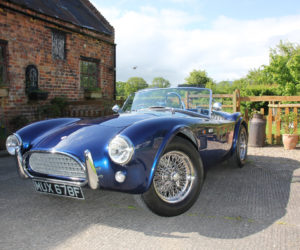
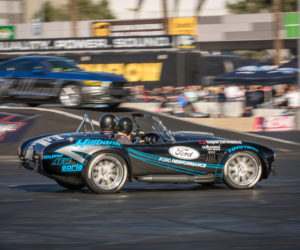
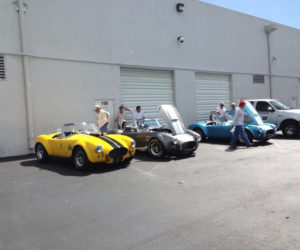
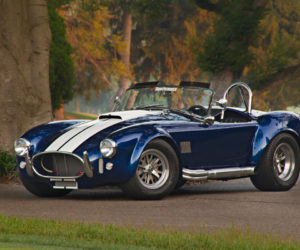




Comments for: Faster Fastback
comments powered by Disqus